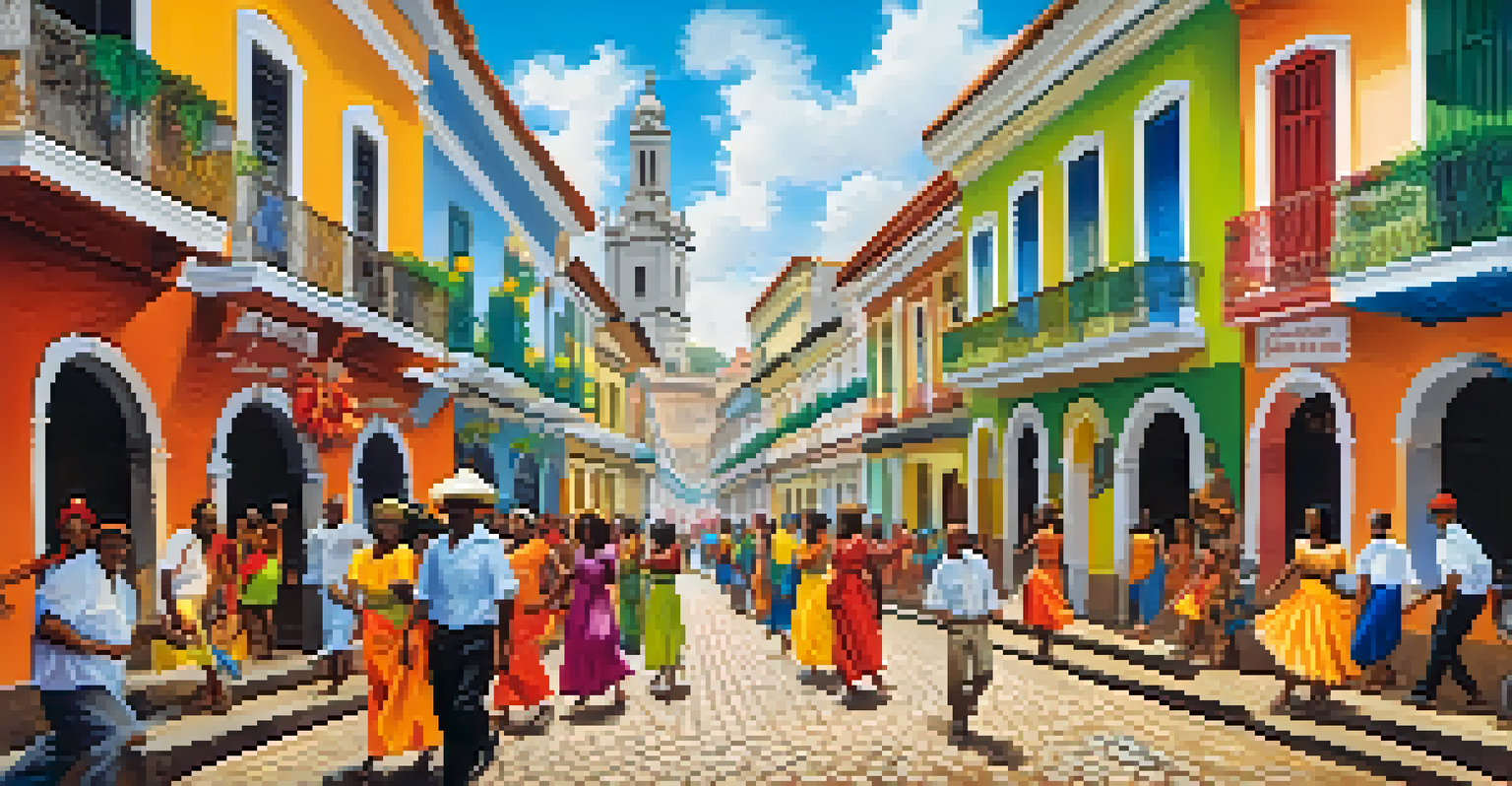Revolutionary Routes: Brazil's Path to Independence Tours

Understanding Brazil's Journey to Independence
Brazil's path to independence is a fascinating tale of struggle and resilience. Unlike many nations that fought bloody wars for freedom, Brazil's transition from colony to empire was relatively peaceful. This unique history sets the stage for a deeper understanding of Brazil's cultural identity today.
Independence is what a people earn with their blood and sweat, not what is given to them by their oppressors.
The journey officially began on September 7, 1822, when Dom Pedro I declared Brazil's independence from Portugal. This moment was not just a political shift; it was a reawakening of Brazilian identity and pride. To appreciate this transformation, one must delve into the socio-political landscape of the time.
Touring Brazil's independence routes allows visitors to explore vital locations that played a role in this significant event. From Rio de Janeiro to São Paulo, each site tells a story of ambition, courage, and the yearning for freedom.
Key Locations to Visit on Independence Tours
One of the must-visit sites is the historic city of São Paulo, where the declaration of independence reverberated through the streets. The Museu Paulista offers insights into the era, showcasing artifacts that belonged to the independence movement. Walking through these halls, you can almost feel the energy of those revolutionary times.

Another significant location is the Ipiranga River, where Dom Pedro I famously shouted, 'Independência ou Morte!' This spot has become a symbol of Brazil's fight for freedom. Visitors can enjoy a picturesque park, which is ideal for reflection after absorbing such a monumental piece of history.
Brazil's Peaceful Independence Journey
Brazil's transition from a Portuguese colony to an independent empire was marked by a relatively peaceful process, setting the foundation for its cultural identity.
Don’t miss the opportunity to explore the city of Salvador, known for its rich Afro-Brazilian culture. Its colonial architecture and vibrant streets tell stories of resistance and resilience, making it a fitting backdrop for understanding Brazil's journey to independence.
The Role of Key Figures in the Independence Movement
Brazil's independence was shaped by several key figures, with Dom Pedro I being the most notable. His leadership and charisma inspired many to support the cause, making him a national hero. Understanding his role is crucial when exploring Brazil's independence narrative.
The greatest legacy of the independence movement is the spirit of freedom that lives on in our culture and identity.
Another essential figure is José Bonifácio de Andrada e Silva, often called the 'Patriarch of Independence.' He was an influential advisor to Dom Pedro I and played a pivotal role in formulating the strategies that led to independence. His vision for a unified Brazil continues to resonate today.
Tour guides often share anecdotes about these figures, bringing history to life and helping visitors connect with this transformative period. Their stories underscore the human elements behind political movements, making the experience more relatable and engaging.
Cultural Impact of the Independence Movement
The impact of Brazil's independence extends far beyond politics; it permeates the culture, art, and literature of the nation. Artists and writers began to express their newfound freedom through their works, capturing the spirit of the time. This cultural blossoming laid the groundwork for Brazil's vibrant identity.
Today, you can see the influence of this era in Brazilian music and dance, especially in genres like samba and bossa nova. These art forms reflect the blend of African, Indigenous, and European influences that characterize Brazilian culture. Participating in local music events during your tour can deepen your appreciation for this rich heritage.
Key Historical Sites to Explore
Exploring pivotal locations like São Paulo and the Ipiranga River allows visitors to connect with Brazil's rich history and the spirit of independence.
Moreover, independence celebrations, such as Brazil's Independence Day on September 7, showcase the pride of the nation. Experiencing these festivities firsthand can provide a deeper understanding of how the past continues to shape the present.
Interactive Experiences on Independence Tours
Many independence tours offer interactive experiences that engage visitors in a hands-on manner. For instance, reenactments of key events allow tourists to step back in time and witness history as it unfolded. This immersive approach makes learning about Brazil's past both fun and memorable.
Workshops on traditional crafts or cooking classes featuring historical recipes can enhance the tour experience. Engaging with local artisans and chefs provides a unique glimpse into the culture and traditions that evolved post-independence. It's a chance to connect with the local community and their heritage.
Additionally, some tours include guided walks through historical neighborhoods, where guides share stories and anecdotes that breathe life into the past. These experiences foster a connection between visitors and the rich tapestry of Brazil's history.
Why Choose Brazil for Your Next Travel Adventure
Choosing Brazil for your next travel adventure means immersing yourself in a country bursting with vibrant history and culture. The journey through its revolutionary routes offers more than just sightseeing; it's an opportunity to engage with the stories that shaped a nation. Each location provides a unique perspective on Brazil’s diverse heritage.
Brazil's warm and welcoming people enhance the experience, making it easy to connect and learn. Local guides often share personal anecdotes that add depth to the historical narrative, creating a deeper bond between travelers and the culture. You'll leave with not just memories, but a sense of belonging.
Cultural Legacy of Independence
The independence movement significantly influenced Brazil's culture, inspiring art, music, and celebrations that reflect the nation's diverse heritage.
Plus, Brazil's stunning landscapes, from lush rainforests to beautiful beaches, provide the perfect backdrop for exploration. Whether you're a history buff or an adventure seeker, Brazil's independence tours cater to all interests, making it a must-visit destination.
Planning Your Independence Tour in Brazil
Planning your independence tour in Brazil can be an exciting and enriching experience. Researching the best time to visit is crucial; the dry season from May to September is ideal for outdoor activities and tours. Knowing when to go can enhance your experience significantly.
Consider joining a guided tour for a more structured experience. Professional guides provide invaluable insights and help navigate the historical sites, making your journey smoother. Many tours also include transportation, accommodations, and meals, taking the stress out of planning.

Lastly, don’t forget to immerse yourself in the local culture while you’re there. Try traditional Brazilian dishes, participate in local festivals, and engage with the community. These interactions will deepen your understanding of Brazil’s independence and its ongoing legacy.